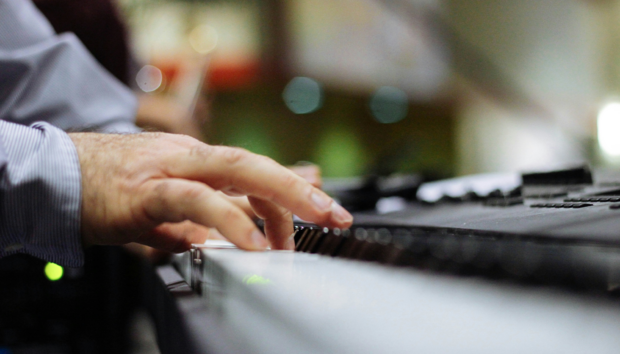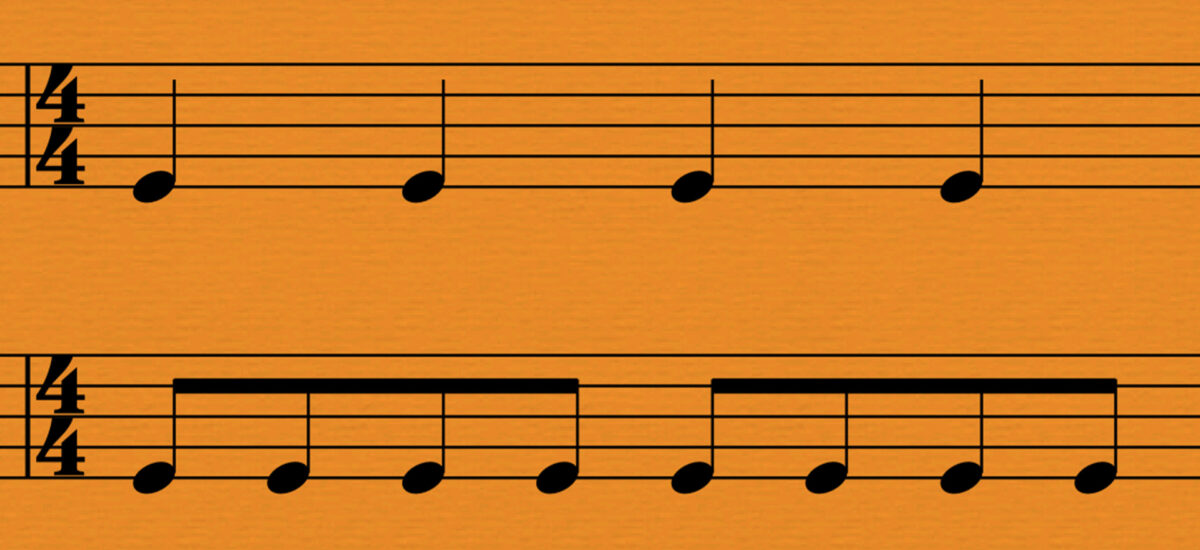
When it comes to making music, ultimately, all that matters is what gets to our ears and not how it was created. There is a vast world of self-taught, non-traditionally trained artists who play and compose music mostly based on their intuition and, sometimes, even without considering any set of formal frameworks or guidelines.
Some of the music made under these circumstances is absolutely mind-blowing. But for most of us making music, having some structures to organize our minds and help us see the musical bits within a more rigid context is quite the advantage.
Time signatures are one of these ways of organizing musical thoughts that can help us create an imaginary context for the music we make. The kind of context time signatures provide is in the time domain, and what the signatures do is split the domain into chunks and give each chunk a certain internal implicit rhythm.
If you’ve been asking, “how do time signatures work?” fear not! In this guide, discover time signatures in music, common time signatures that you can use, and how to use time signatures in your DAW to create music.
Jump to these sections:
- What are time signatures in music?
- Common time signatures
- How to use time signatures in composition and songwriting
- How to use time signatures in a DAW
Create your music with Komplete Start, a free collection of professional instruments, sounds, and more that you can use in your DAW once you set your time signature for your composition.
What are time signatures in music?
Time signatures represent how we organize and hear the cadence of each segment of time in a music piece or one of its sections.
If we are listening to a song and we find ourselves tapping on the floor with our feet, we are most likely feeling the internal time units of a piece. If we notice further, each strong chord change usually tends to happen at the beginning of a time segment, and our instinct most likely will make us tap harder at the beginning of each segment for that same reason.
Time signatures are the result of trying to put these units of time into an organized context. This way, we can predict what the rhythmic flow of a song or part of a music piece will be.
The time signatures are indicated by a fraction-like symbol with one number on the top and another number on the bottom. This might be a bit confusing since it doesn’t really represent a fraction of the time. Rather, it indicates what type of units we will be using and how many of those units per time segment there will be.

Each one of these time units can also be subdivided into smaller parts. The main distinction between types of time signatures has to do with the possibilities of how we can subdivide the smaller parts. The two most common scenarios are when we subdivide the beats by two or by three. These are called binary and ternary time signatures, respectively.
What I’m calling here time units is what we usually refer to as beats, and the time segments are what we know in music as measures. The time signature describes what the internal organization of the measure will be.
We might set an initial time signature for a piece, but that doesn’t mean that things can change throughout the course of the song. We can have multiple different time signatures throughout this song, changing the rhythmic flow of the piece as we move into the different parts.
Common time signatures
Let’s take a look at the most commonly used time signatures in popular music:
Simple duple (2/4)
This time signature has two beats per measure, and each beat is subdivided into two equal parts.
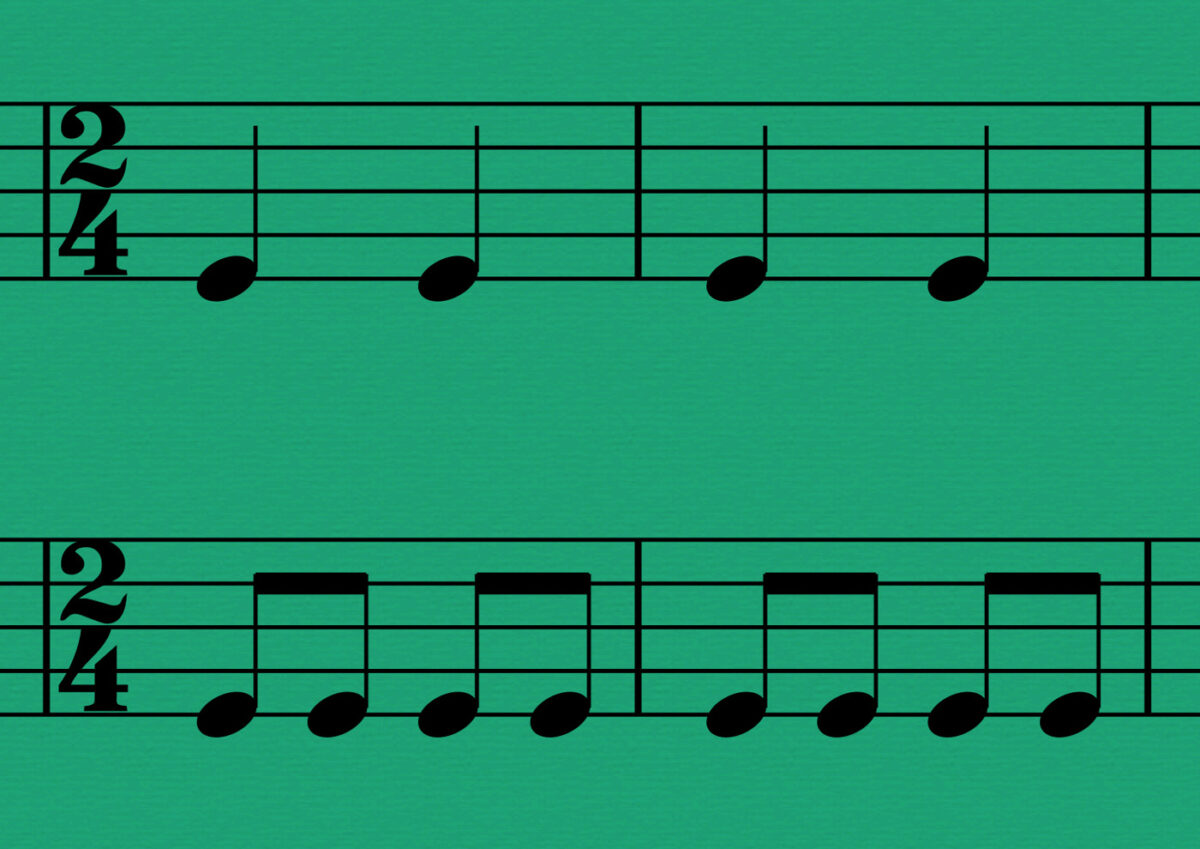
This time signature has two beats per measure, and each beat is subdivided into two equal parts. We can find this time signature in marches and some forms of folk music such as Tango. The short 2-beat-per-measure cadence makes for a strong emphasis on each chord change, and it naturally creates a bouncy feeling.
Here is an example by the legendary orchestra of Carlos di Sarli, performing a piece written by Carlos himself: “Milonguero Viejo.”
Simple triple (3/4)
This time signature is recognized by having three beats per measure, with each beat divided into two equal parts.

This time signature is traditionally found in waltzes and dances, but it has made its way into modern pop music culture as well.
The accent at the beginning of the measure makes the two other beats feel like almost an afterthought or echo of the initial hit, making the music seem to float during the later part of each measure.
Listen to “Breaking the Girl” by The Red Hot Chilli Peppers from their iconic “Blood Sugar Sex Magik” album. Here, you will hear a strong emphasis every three beats and how the drum part is constructed diligently within that framework to create a forward propelling momentum.
Simple quadruple (4/4)
This is perhaps the most easily found time signature in Western music, also known as “common time.” It features four beats per measure, with each beat subdivided into two equal parts.

We find this time signature across many genres and styles, all throughout Western music history. From symphonies to folk songs, troubadours, and your hippest lo-fi bedroom music producers, 4/4 seems to have come here to stay.
I can’t help myself but bring up one of the most classic and well-known rock songs of all time. This epic classic by AC/DC has some of the most infectious slow rock riffs in 4/4 ever heard. This song is so much on 4/4 that it even announces itself with a two-full measure count-off on the hi-hat.
Compound duple (6/8)
The particularity of compound time signatures is that each beat is divided into three equal parts instead of two. This results in two dotted quarter note beats per measure. 6/8 is the most widely used compound time signature, but 9/8 (with three dotted quarter beats per measure) and 12/8 (with four dotted quarter beats per measure) are also popular.
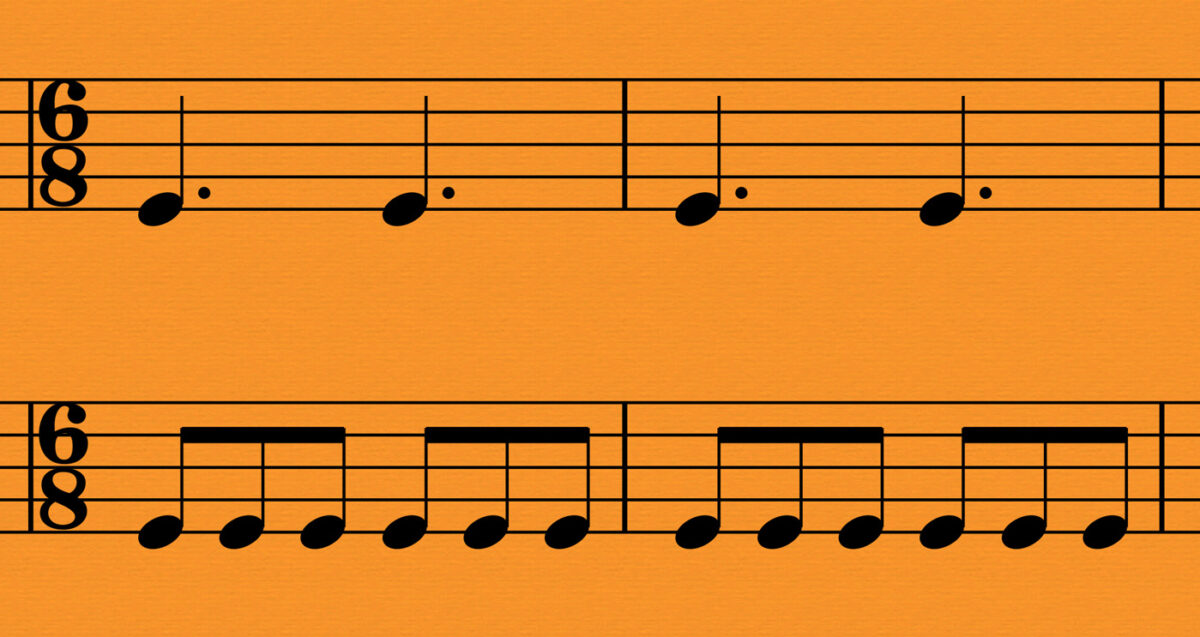
Although 6/8 and 3/4 feature the same amount of eight-note subdivisions within, the difference is in their grouping, which gives 6/8 a much more flowy feel compared to 3/4.
I will take this opportunity to share some folkloric music from the north of my home country (Argentina), which fuses folk Zamba with some jazz-harmony flavors. In this particular style, we can hear sections of the music that emphasize the 6/8 feel and others that use the quarter note beats, making for more marching sections. The back and forwards in between these two feels creates a musical dialog that is very unique to this region and characterizes the Zamba.
Take a listen to El Duo Salteño performing “La Pomeña,” written by Gustavo “ El Cuchi” Leguizamón.
How to use time signatures in composition and songwriting
As a composer myself, I know how daunting the “blank page” scenario can be and having to create on the spot out of nothing. Having any sort of framework or container to work within can be a helpful springboard for our ideas to spark and our musical thoughts to get organized. Time signatures can help provide this holder. A melodic scale, key, or grove can also be helpful in a similar way.
We can map out different sections of a song and plan to use different time signatures to create contrast and differentiation between sections. Or we can stick to the initial time signature (which is most common in 99% of modern pop music) and use the rhythm framework provided as a way of imaginary dotted lines to draw within and over it.
A really helpful exercise is to listen to different songs and try to identify what time signature they are in. Or, even better, if we hear a section of a song that doesn’t seem to fit within the same time signature, try and figure it out by tapping along with your hand or feet and counting how many beats per chord change or between each strong landing place there are.
Being fluid at identifying time signatures in songs will quickly become second nature within your musical language, and you won’t have to think too much about it later on. Music is meant to be felt rather than understood. But diving deep into the more analytical side of things for a while can give us the foundation to move mostly by intuition later on.
How to use time signatures in a DAW
For most of us working in music nowadays, using a digital audio workstation (DAW) is quintessential to our process. Time signatures help us organize the content on our timeline and make edits much more easily. We can also use time signatures at times to create space between sections by adding additional beats to the end or beginning of a section.
Most DAWs have a dedicated feature or setting where you can specify the time signature for your project. This setting allows you to choose the number of beats per measure and the note value that represents one beat (e.g., 4/4, 3/4, 6/8, etc.).
Sometimes slowing the tempo down to create a transition can be a good approach, but sometimes just adding a couple of additional beats (for example, a 3/4 measure after the last measure of a phrase that is in 4/4) can be a way to “stretch time” while maintaining the same click track-tempo in the session. This comes in handy when working with collaborators who might be working on a different DAW or if we just want to export a quick mix bounce and tell them the bpm of the session so they can have their own click track without worrying about tempo changes or midi maps.
In the context of a DAW, the “piano roll” is our playground to play with time and how notes fall in place. We can create a note or rhythm pattern, copy it, paste it, duplicate it, transpose it, expand it in time, and create all sorts of combinations stemming from an initial musical cell.
Having a clear understanding of the time signature we have chosen can facilitate the compositional process as well as speed up our editing when working with both MIDI and audio. When we take into consideration the time signature and how our musical ideas are reflected in relationship to the musical grid, we are fully in control of time and how it all gets contextualized.
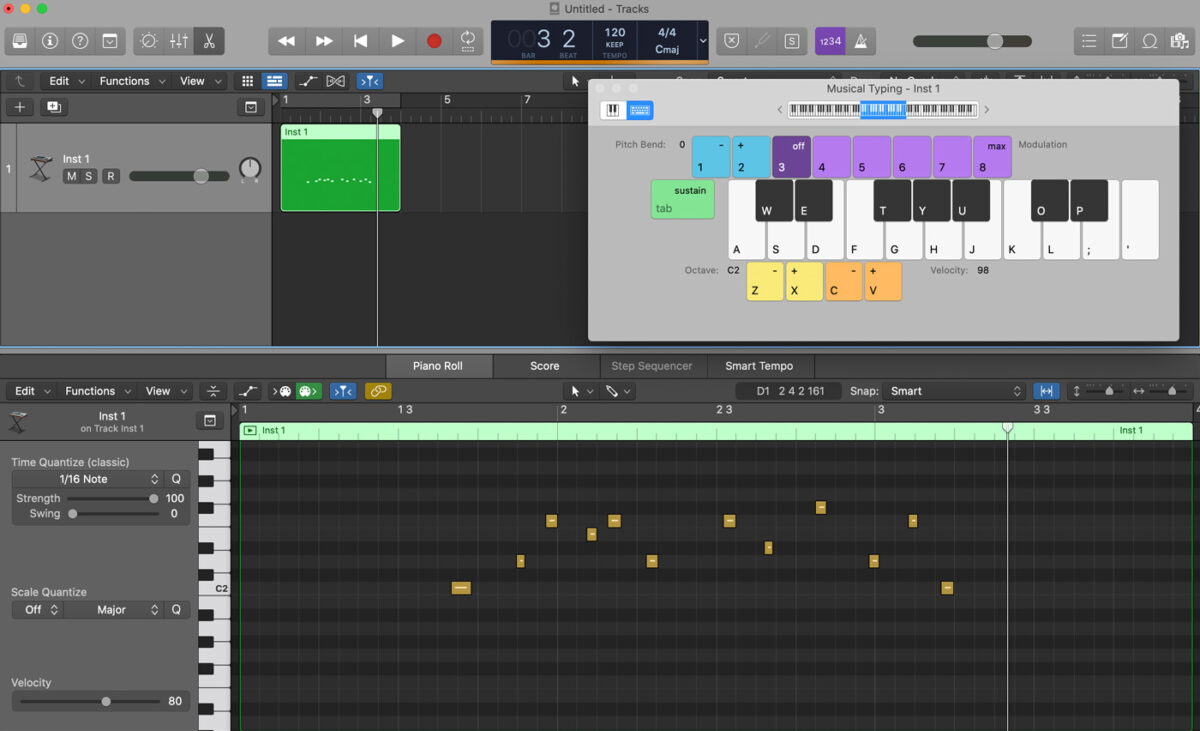
Starting using time signatures in your music
Time signatures are powerful tools that help us contextualize notes and rhythms within a framework. Whether you are working on a trap beat, composing a piece for a film, or writing a pop song, being well-versed in the possibilities and characteristics of different time signatures is going to be a really important part of your musical toolkit.
Don’t hesitate to explore the sonorities that various time signatures can provide and try out various combinations and re-versions of the same melody or chord progression on a different time signature. You might be amazed at the things you discover by just changing how time is organized within a piece of music.
Now that you have a better understanding of time signatures, it’s time to compose your own music with tools like Komplete Start, a free collection of instruments, sounds, and effects to get you started. Have fun!








